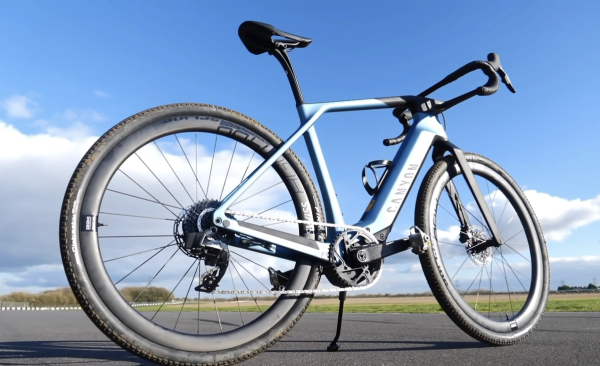Electrify your commute: How to cycle to work on an e-bike
Many cyclists now commute to work by electric bike, but should you join their ranks? Here’s everything you need to know about commuting by e-bike
Tom Hallam-Gravells
Online Production Editor
More and more people are choosing to ditch their motor vehicles in favour of a cycling commute to work, and for good reason. Commuting by bike is cheaper, more environmentally friendly, a valuable form of exercise, and a great way to de-stress after a long day at work.
There are lots of different bikes available that are suitable for commuting, but e-bikes are becoming the most common. Providing an added boost as you ride, they take some of the strain out of cycling, especially if you don’t want to arrive in the office dripping in sweat.
But when exactly should you choose an e-bike over a regular bike and what do you need to consider when buying one for a commute? Here’s everything you need to know about commuting to work by e-bike.
- Read more: 10 benefits of riding an e-bike
Is commuting by e-bike a good option for me?
E-bikes contain small motors which will assist you as you ride, up to speeds of 25kph in the UK, EU and Australia, and 20mph in most places in the USA. You still pedal but the motor takes up some of the slack, offering a welcome helping hand. They make cycling more accessible, although that accessibility comes at an extra cost, which sometimes can far exceed a regular bike.
That’s why, before jumping straight in to buying an e-bike for a commute, it’s worth weighing up the benefits to decide whether you really need one, or if a regular bike could do the job. Here are a few things to consider.
Fitness level
The obvious benefit of an e-bike is its motor which will help to power the bike, although you’ll still have to pedal to receive this assistance.
For some cyclists, an e-bike isn’t necessary because they have the fitness levels to ride without a motor, but for others, the motor can help them to ride further or faster and tackle terrain that otherwise wouldn’t be possible.
These same benefits apply to commuting, so when deciding if you need an e-bike for your commute, distance and terrain are important considerations.
Distance: How long is your cycle commute?
Depending on how far away from work you live, cycling to work on a regular bicycle may not be sustainable, especially if you have to complete it twice a day for multiple days a week.
If the distance is a barrier to a cycle commute, an e-bike is a great solution. Contrary to some common myths, most have large batteries that can power you for long distances, usually much further than the average commute: a typical e-bike will go more than 100km between charges.
Additionally, the range can be extended by using lower assistance levels which are friendlier to the battery. And, even if your battery is running out of juice, they’re really easy to charge through a standard mains plug. So, with an e-bike, the distance to work will no longer be a barrier – that is unless you live really far away.
Terrain: Conquering hills and and commuting with ease
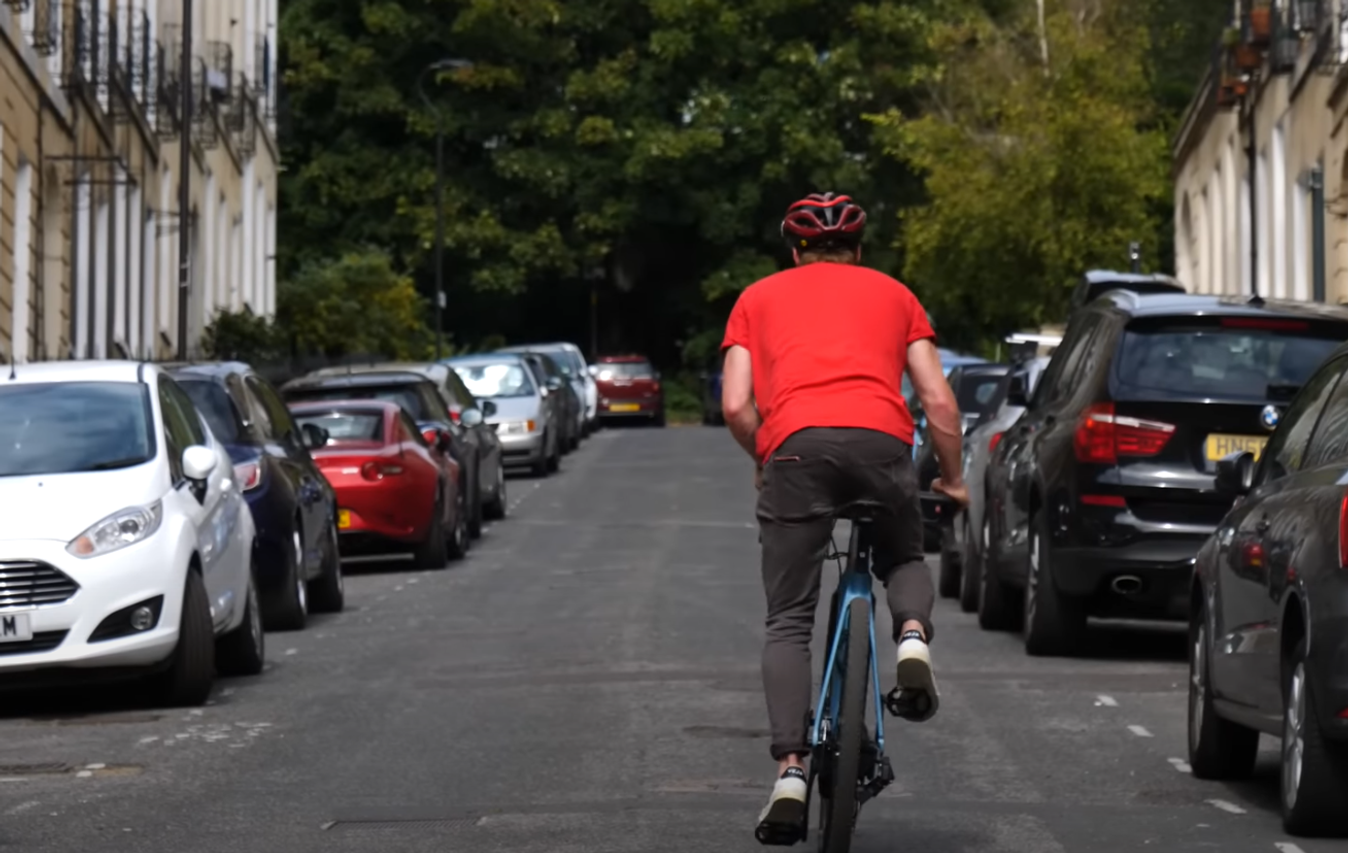
© GCN
E-bikes make hills more manageable
While driving in a vehicle, it’s easy to overlook how bumpy your commute to work is. After all, the engine takes up all of the slack. It may only become apparent when you find yourself grinding up climb on a bike, cursing your decision to mix up your commute.
Some cyclists enjoy a tougher workout on their way to work, but others simply want to experience a gentle ride to get from A to B. That isn’t easy when there are hills in the way.
Once again, an e-bike can provide the solution. It won’t make the hills disappear, but an e-bike will make toiling up their slopes a lot easier compared to a regular bike. Whatever the terrain, if you’re struggling to comfortably complete rides, or if you just want to make a hilly commute a lot faster, an electric bike could be the difference between commuting by bike and taking another mode of transport.
Don’t work up a sweat
This point has nothing to do with fitness levels, but it’s equally important. Cycling can be a sweaty business, especially in the height of summer. Even on the steadiest ride, you can find yourself bathed in sweat — cue some interesting looks from colleagues when you arrive in the office.
Hopefully, your workplace has shower facilities but if not, you face a long and sticky day at work. To avoid this scenario, many cyclists have turned to electric bikes. It’s important to reiterate here that you still have to pedal but your effort level will be a lot lower, which will hopefully stave off a sweaty arrival into the office.
Will an e-bike save money compared to commuting by car?
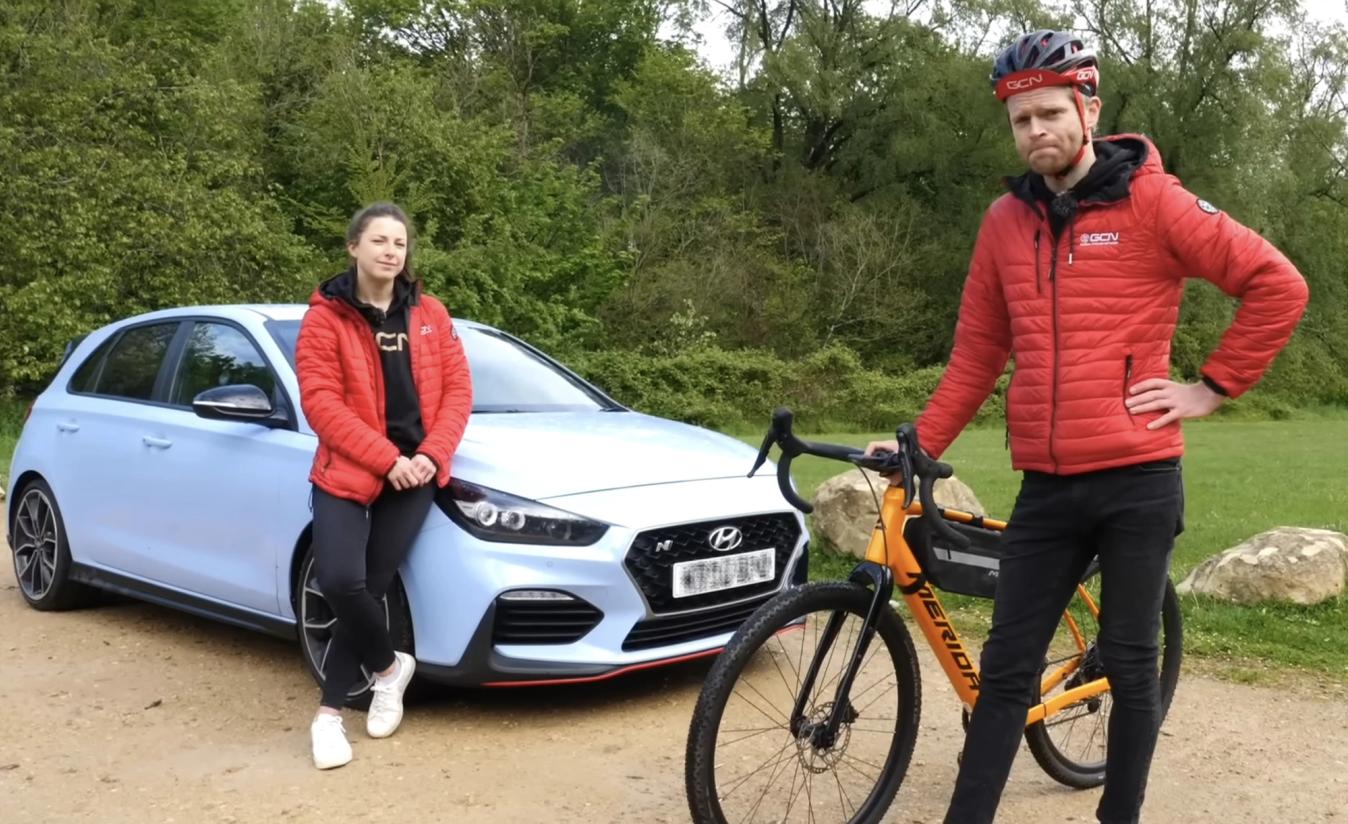
© GCN
An e-bike is a more cost-efficient way to commute
At first glance, an e-bike may appear to be anything but cost-effective. Most high-quality e-bikes will set you back at least $/£/€1000, and that’s only at the lower end of the scale, so it’s a big investment. Then there are the added accessories and equipment to consider.
Break things down into the long-term financial output and things swing quickly in the favour of the e-bike. For a start, electricity is much cheaper than fuel, which can almost single-handedly claw back the cost of the e-bike.
Then there are maintenance costs, which tend to be much higher for a car, green zone fees and the costs of parking. With all of these things taken into account, the costs of a car can run into the thousands.
So, even for a single year of commuting, an e-bike can make financial sense, but when that is spread over years of commuting, an e-bike is the clear winner in the financial stakes.
How to choose an e-bike for commuting
Buying an e-bike is a significant investment so it’s important to get it right. A bike that isn’t suitable or you don’t enjoy riding will most likely be condemned to solitude in the garage.
Like with any other type of bike, the key is to buy one that matches your specific needs.
Types of e-bike

© GCN
There are many different types of e-bikes available
E-bikes started as road-faring machines, but the technology has since expanded and there are now electric bikes for every type of riding. From mountain bikes to cargo bikes, there’s something for everyone.
We’re going to presume here that your commute won’t involve traversing mountain passes, so you can probably pass on an e-MTB. For most commuters, the ride will be limited to tarmac. Hybrid bikes can be a great option for this as they put a rider in a comfortable position and are built for convenience, usually with luggage racks or mounting points for baskets, bags and mudguards. They usually have wider tyre clearances than road bikes too, which means you can use wide, comfortable, puncture-resistant tyres.
Road bikes have aggressive geometries that put riders in a more race-oriented position on the bike. This will be uncomfortable for many riders but if speed is your thing or you’re travelling greater distances, a road e-bike will eat up the miles.
Some commutes may veer off-road onto towpaths or gravel tracks. Both hybrid and road bikes can tackle these, but you’ll need wider tyres to boost grip and comfort. Hybrid bikes generally have more tyre clearance than road bikes, making them more suitable for this.
Gravel bikes also hone into view here. They’re essentially road bikes with wider tyres, capable of performing on both gravel and tarmac. If you want to mix up your commute and escape the shackles of the road, a gravel e-bike can be a fun option. It will be versatile and fun for recreational rides on the weekend, too.
Then there are folding bikes, masters of the urban commute. Purposely built to navigate towns and cities, they’re designed to be practical and can be taken on public transport. So, even if you have to jump on a train or bus for part of your journey, you can use a bike for the rest.
E-bike battery range
Hopefully you’ve decided on the type of bike, now it’s time to focus on the battery. The size of the battery dictates the range of the bike, so aim for something that easily covers your day of commuting or, even better, multiple days of riding. Check how long a battery takes to charge too.
It’s important to remember that the range of a battery is usually influenced by the mode you ride in. Higher levels of assistance will drain a battery faster, while lower levers will be more battery friendly.
And, even if you run out of battery, you can still ride the bike like a normal push bike, just without the added assistance.
Where to store an e-bike
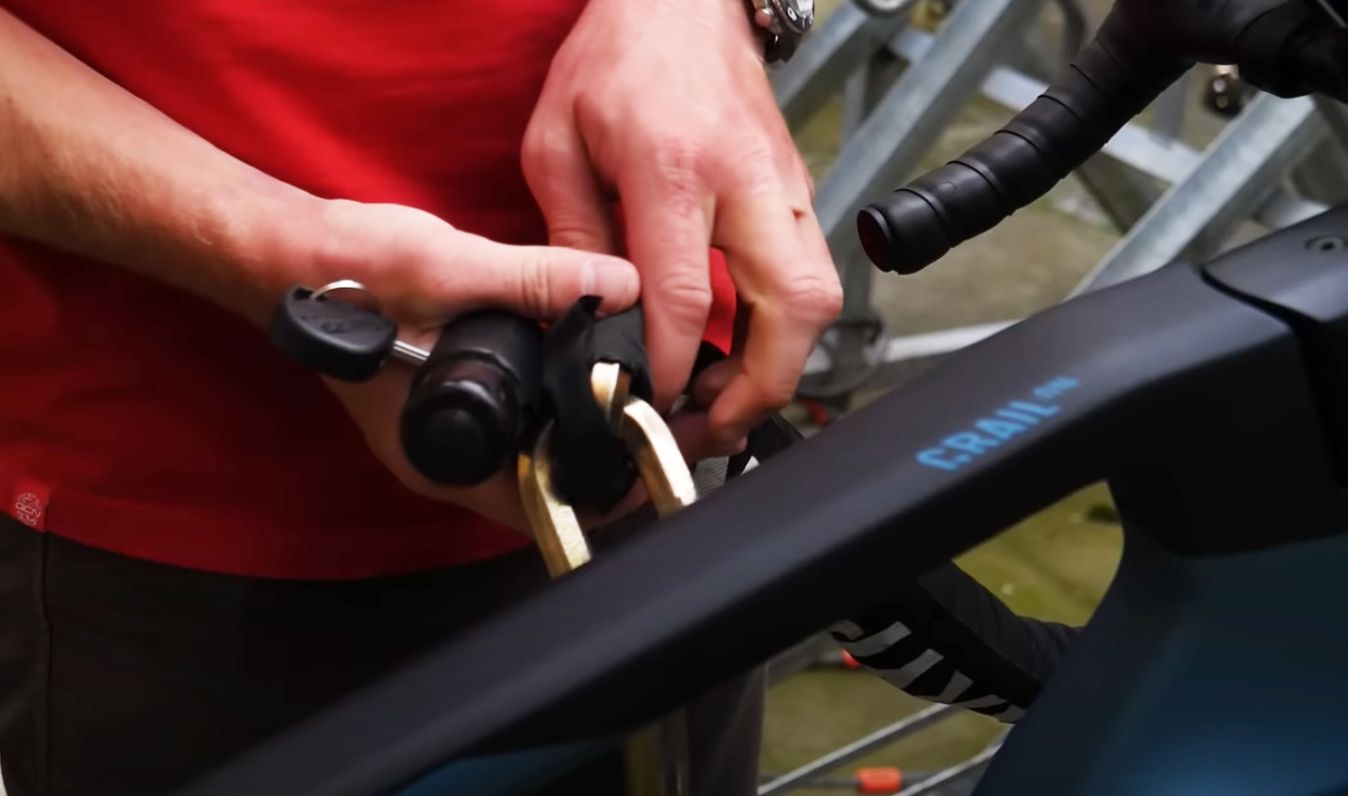
© GCN
Always use a secure lock when storing a bike
Don’t just think about the e-bike; take other practical factors into account too, like storage facilities at your work. Things will be much simpler if your workplace has dedicated bike storage but if it doesn’t, you need a solution.
Folding bikes are the most obvious answer as you don’t need a large storage space — under a desk will be enough room. Check around to see if there are any other storage spaces at your workplace too.
If there’s nowhere at work, you’ll need to find somewhere external to lock it up, which opens up some more considerations. Of course, you need at least one good quality lock. We would recommend insurance as well, so if your bike does go missing, you won't be left out-of-pocket.
Some e-bikes have alarms and other safety features which will act as a deterrent on top of a lock, so if you know you will be leaving your bike in public, look for security features when choosing an e-bike.
Always pick a location that is busy and in view of cameras, plus avoid locations where there are broken locks or other signs that bikes have previously been the subject of crime.
- Read more: How to lock your bike securely
How to start commuting by e-bike
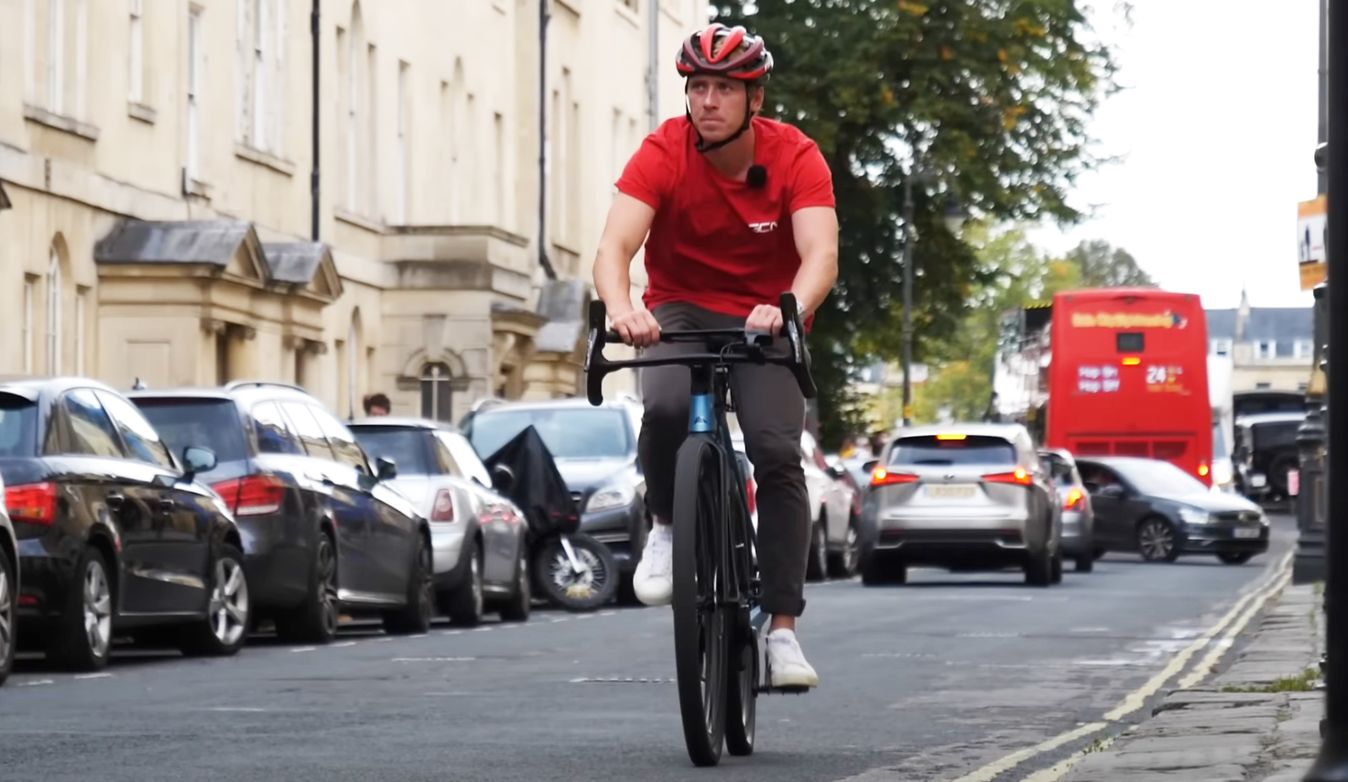
© GCN
Commuting by e-bike can be daunting at first
Even once you’ve bought an e-bike, heading out for the inaugural commute can be daunting. However, with a few easy steps, you can quickly discover your commuting groove.
Plan your route
The route that serves you well in a car won’t necessarily be suitable for a cycle commute, so you need to plan a route ahead of time.
Try to avoid main roads and stick to cycle lanes wherever possible. As you become more comfortable, mix things up by exploring new routes, whether that be through gravel tracks and towpaths or simply new cycle lanes.
There are lots of cycling route planning apps that can help with this, but we like the route planner from our partner Strava.
- Read more: 8 Strava features everyone should know about
Commute with friends
If anyone else from your workplace commutes by bike, or even if you have friends cycling in the same direction, why not buddy up and commute together? It’s good to have someone a little more experienced, especially if you’re new to cycling, who can offer advice and guide you through those opening forays.
Over time, you’ll also appreciate the company, and having a plan to ride with others will encourage you to keep cycling when you get tempted to grab the car keys and leave the bike at home.
Prepare for the weather
We’ll end with a reminder to always check the weather forecast. If you’re lucky enough to live in warmer climes where sun is a constant fixture, you can skip this section. Most of us do not, and rain is an ever-present threat. There’s nothing wrong with hopping in the car when the weather is bad, but if you want to carry on with your cycle commute, make sure you have high-quality waterproofs – no one wants to arrive in the office sodden in water.
Don’t neglect anything else you’re carrying, either, like your laptop or a change of clothes. If your rucksack isn't waterproof, you need to protect your possessions from water — we learnt that from experience.
For more e-bike features and advice, head over to our buying guides on the GCN website, linked here.
.jpg?rect=957,780,3097,3060&w=600&auto=format)

.png?w=600&auto=format)





.jpg?w=600&auto=format)
